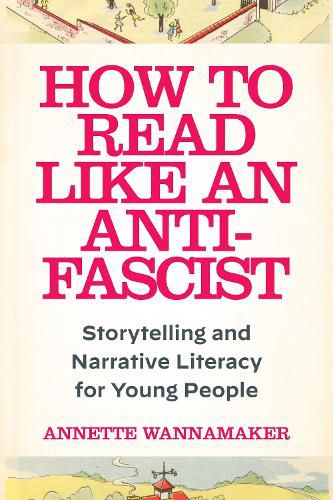Readings Newsletter
Become a Readings Member to make your shopping experience even easier.
Sign in or sign up for free!
You’re not far away from qualifying for FREE standard shipping within Australia
You’ve qualified for FREE standard shipping within Australia
The cart is loading…






On the urgent need to promote critical reading skills amidst rising authoritarianism
Children's author Philip Pullman famously said that "There are some themes, some subjects, too large for adult fiction; they can only be dealt with adequately in a children's book." While the recent rise of fascist ideology in the United States might seem a subject too large and adult to be dealt with in literature for children or teens, Annette Wannamaker proposes in How to Read Like an Anti-Fascist that there are books aimed at future generations which critique and counter fascist propaganda and mythmaking.
Works of literature can reflect fascist ideology and promote it as well, but Wannamaker proposes that some books also offer tools for understanding it. Books written for beginners can introduce readers to complex concepts, break big ideas into manageable parts, and teach readers how to read the world outside of the book. Antifascist books are ones that analyze fascistic rhetoric and storytelling, educate about America's long history of authoritarianism, and highlight various facets of fascism such as scapegoating others and re-asserting patriarchal power.
From "The Emperor's New Clothes" and the tales of Superman to Mildred Taylor's Roll of Thunder, Hear My Cry, the 1619 Project and contemporary works such as All Boys Aren't Blue and Donald Builds the Wall, Wannamaker shows how the ethos of authoritarianism is characterized by a strict hierarchy that places children at its very bottom. In doing so, she argues convincingly that books written for young people can provide a particular view from the bottom, a perspective well-suited to interrogating systems of power.
$9.00 standard shipping within Australia
FREE standard shipping within Australia for orders over $100.00
Express & International shipping calculated at checkout
On the urgent need to promote critical reading skills amidst rising authoritarianism
Children's author Philip Pullman famously said that "There are some themes, some subjects, too large for adult fiction; they can only be dealt with adequately in a children's book." While the recent rise of fascist ideology in the United States might seem a subject too large and adult to be dealt with in literature for children or teens, Annette Wannamaker proposes in How to Read Like an Anti-Fascist that there are books aimed at future generations which critique and counter fascist propaganda and mythmaking.
Works of literature can reflect fascist ideology and promote it as well, but Wannamaker proposes that some books also offer tools for understanding it. Books written for beginners can introduce readers to complex concepts, break big ideas into manageable parts, and teach readers how to read the world outside of the book. Antifascist books are ones that analyze fascistic rhetoric and storytelling, educate about America's long history of authoritarianism, and highlight various facets of fascism such as scapegoating others and re-asserting patriarchal power.
From "The Emperor's New Clothes" and the tales of Superman to Mildred Taylor's Roll of Thunder, Hear My Cry, the 1619 Project and contemporary works such as All Boys Aren't Blue and Donald Builds the Wall, Wannamaker shows how the ethos of authoritarianism is characterized by a strict hierarchy that places children at its very bottom. In doing so, she argues convincingly that books written for young people can provide a particular view from the bottom, a perspective well-suited to interrogating systems of power.